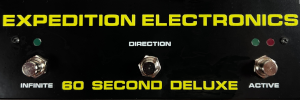Showing posts with label Musonics. Show all posts
Showing posts with label Musonics. Show all posts
Saturday, November 22, 2025
11/22/25 Ace Tone FR-1 + muSonics Wave Folder + .com Q118 Q125 + Oakley ADSR/VCA + (…)
video upload by Cfpp0
"11/22/25 Ace Tone FR-1 + muSonics Wave Folder + Synthesizers.com Q118 Q125 + LWSS Oakley Modular ADSR/VCA + DeltaLab Effectron II + Alesis MIDIVERB II
Bossa Nova and Slow Rock. Ace Tone FR-1 Rhythm Ace drum machine audio output to the Synthesizers.com Q118. The Q118 amplifier output to the muSonics Wave Folder. The Q118 gate output to the LWSS Oakley Modular ADSR/VCA gate input. The Q118 envelope output to the control input on the muSonics Wave Folder. The Oakley VCA output to the Mackie Onyx 1640 mixer, with Alesis MIDIVERB II gated reverb. The Wave folder output multiplied on the muSonics Mutliples, then sent to the DeltaLab Effectron II delay, overloading the preamp, and then to the Mackie with the same gated stereo reverb on the MIDIVERB."
Friday, November 21, 2025
Lyle Four Voice Vanilla Synthesizer by muSonics



You might recall muSonics Lyle featured in previous video posts here on MATRIXSYNTH.
The following are some addtional details and pics of the system in via muSonics.
Lyle is a four voice Vanilla Synthesizer with a polyphonic envelope generator system, four voice mixer, MIDI allocation, and utility modules. It is the first polyphonic modular synthesizer with master control of time and timbre since the Oberheim Four Voice, whose circuits it is based on.
Anyone can throw four voices in a box and call it a polyphonic synthesiser, so what makes Lyle so special?
The Polyphonic Envelopes network has its own set of 8 envelope generators, bringing the system total to 16. Its EGs are normaled to the filters, oscillators, and output amplifiers of the system. The Vanilla Envelopes are still available and can be patched to interrupt the Polyphonic Envelopes.
The Polyphonic Envelopes control module is the only one of 7 in the network which is on the front panel. It gives you attack, decay, and sustain control for the VCF and VCA EGs, amount controls to route the VCF EG to the VCF and VCO modulation inputs, and an offset control for the VCF EG to the VCF modulation input (think global filter cutoff.)
There have been a few stabs at aggregate polyphony since Tom Oberheim built Lyle Mays and Pete Namlook their favourite synthesizer, but no one has done this.
Another nice feature of this instrument is the Vanilla Stereo Mixer, which not only gives you level and pan for each voice but also an additioinal gain stage to overdrive if you wish, bringing the total number of manageable gain stages (and potential distortions) to four per voice.
The instrument can be operated without any patch cables on the front panel. MIDI control and audio output happens on the back of the instrument. Patch points are for timbre authoring beyond the default patch, similar to an ARP 2600.
The module complement includes:
- 4 Control Distributor
- 4 Vanilla Modulation
- 4 Vanilla Oscillators
- 4 Vanilla Filter
- 8 Vanilla Envelope
- 4 Vanilla Mixer
- Vanilla Stereo Mixer
- Polyphonic Envelopes (8 additional envelopes)
- Japanese Modulation
- Transistor Logic
- Active Multiples
- Active Attenuators
- 4 MIDI Interfaces plus polyphonic MIDI allocator
Lyle also includes a road case, which is required because there is no other way to ship it assembled.
Lead time of 6 months or so. I need to finish the backlogue of current orders first.
The deposit is 50%. When your instrument is ready an invoice for the balance and shipping will be generated.
A page of demonstration audio and video is at https://musonics.com/lyle_videos.htm
If you're interested in purchasing Lyle please visit https://musonics.com/ and it can be found at the top of the page.
Wednesday, September 24, 2025
Lyle visits the Lost Ant Cafe
video upload by suitandtieguy
"Monday night I went to a very tiny bar in Lostant IL called the Lost Ant Cafe for fried chicken because the third shift clerk at the Tonica Casey's had a long conversation with Squiche and I about a bunch of stuff on the way back from Knobcon and I asked her what local fried chicken she liked. This was the only place I can remember from the conversation, and it's about a quarter mile down the road from a legendary upper Illinois River valley supper club called The Bull's Head which has been closed for too long. If you don't understand the relationship with the upper Illinois River valley, Italian supper clubs, and fried chicken then I don't know what to say other than you need to touch grass.
I came back to the studio and did this with Lyle. I think it demonstrates how absolutely fried this thing can sound. EBM guys are gonna want to save their pennies for the heaviest (by weight) bass machine they've ever played.
There is a modest amount of distortion on this example, in addition to slow LFOs from each voice controlled by each voice's auxiliary VCAs whose level is set by the Active Attenuators generating a simple voltage offset (something it does if you plug nothing into it) then multiplied to all four voices with the Active Multiples. These LFOs are fed into the second control input of the Vanilla Filters.
Each voice is panned across the soundfield with the output mixer.
In this example I only tweak the gate time on Continuo, global filter frequency and envelope amount, and the amount of the LFO to the filters from the Active Attenuators on the right side of the synthesizer.
As usual with Lyle videos, no effects or mastering at all, simply normalised.
Audio Verité, just like The Drive To 1981. I think it sounds great."
Saturday, September 20, 2025
muSonics Lyle vs Continuo - Too Short for Oktoberfest
video upload by suitandtieguy
"This is an eight stage sequence of dyads within a minor 7th chord from the Continuo. It's in E minor and gets modulated to the fourth a couple of times. It's not a composition, it's just a demo.
I really like demonstrating this instrument without any patch cables at all but decided to use each voice's sine LFO to slowly modulate their filters, attenuated by the Control Distributor and fed into the secondary control input of the Vanilla Filters so they're still getting pitch voltage from the sequencer and modulation from the Polyphonic Envelopes.
The curve ball I throw into this is taking the left pulse wave from voice one and sending it into the clock input of Transistor Logic's flip-flop. The data input is normaled to the negative output of the flip-flop so with this simple routing it becomes an octave divider, but since it's a logic module the output is 0-5V. This is fed into input two of the Vanilla Filter of voice one, and partway through I turn that knob up so you can hear it, bringing in a four note bass element."
Wednesday, September 17, 2025
muSonics Lyle: Deep Note
video upload by suitandtieguy
"Deep Note on Lyle, the first properly polyphonic modular synthesizer since the Oberheim Four Voice.
If you have a Moog One, the preset is TK-421 and yes I programmed it. (the very competent marketing department wouldn't let us tag authorship in the patch description.) Page McConnell, you're welcome!
This was a bit more rough-and-tumble than that preset, but might be cooler. It uses polyphonic glide AND envelopes, and I had to do this over and over again to set the voices up to start on the right notes and get the timbre where I wanted it. Amos had to update the firmware for the MIDI-CV modules so the glide time was long enough!
The envelopes are used on 3 of the voices to spread them an octave, a fifth, and a third. the upper voices start on G below middle C and the lower voices start on G above middle C.
I referred back to the score that was published back in 2018 and approximated the notes, but there just isn't enough oscillators to do the whole thing.
There are enough to make it sound good though.
I still used the new Sony camera but recorded it via SDI with one of my Ki Pro recorders because the audio inputs sound MUCH better and it records in Apple ProRes format which Digital Performer can handle without conversion. This is a really cool setup and is so easy to crank this stuff out with. Expect more."
Saturday, September 06, 2025
Experience the massive muSonics Four-Voice Vanilla Synth! #Knobcon
video upload by CatSynth TV
"Moot BooxLe demonstrates the massive new Four-Voice Vanilla Synthesizer from muSonics, which is making its debut at Knobcon 2025. This instrument is a beast, both in terms of size and sound - it is a polyphonic four-voice version of muSonics Vanilla Synthesizer, which gives us four independent analog subtractive synth voices to play simultaneously. They can be set to the same timbre, or set and modulated individually.
To find out more, please visit https://musonics.com
00:00 Introduction
00:10 Moot BooxLe demonstrates the Four-Voice Vanilla Synthesizer
04:30 Amanda of CatSynth takes a turn on the synth
05:51 Conclusion"
Sunday, August 10, 2025
STG MuSonics Vanilla Voice (5U MU Dotcom Large Format!)
Note: links to listings are affiliate links for which the site may be compensated.
via this Reverb listing
 You can find demos in previous posts here.
You can find demos in previous posts here.
From the listing:
"If you have not been following the 5U scene, you may or may not know that Suit and Tie Guy's eurorack company, STG Soundlabs, was acquired in a private equity trade valued at 6 million $DOGE by America's oldest synthesizer company, MuSonics (makers of fine musical instruments). You may also not know that this new and revitalized MuSonics then set about completing the work that Tom Oberheim started and created the "Vanilla Synthesizer" -- the culmination of all of the circuit and synthesis ideas of the Oberheim Two Voice. This is the first version of that synthesizer.
If you want SEM type sounds, this is the best sounding SEM that it is possible to introduce into your studio in the year of our lord 2025. Arguably, it is the best sounding analog monophonic synthesizer that currently exists. Set aside that it obviously looks beautiful and amazing and ergonomic and that it invites you to play it; it simply sounds better than any other monosynth made in this millennium.
Including STG's unique backplane CV/Gate cables to pre-patch control signals between modules, making these modules something like an Oberheim SEM with Arp 2600 pre-patchability -- this thing is a true modern classic. :)"
via this Reverb listing
 You can find demos in previous posts here.
You can find demos in previous posts here.
From the listing:
"If you have not been following the 5U scene, you may or may not know that Suit and Tie Guy's eurorack company, STG Soundlabs, was acquired in a private equity trade valued at 6 million $DOGE by America's oldest synthesizer company, MuSonics (makers of fine musical instruments). You may also not know that this new and revitalized MuSonics then set about completing the work that Tom Oberheim started and created the "Vanilla Synthesizer" -- the culmination of all of the circuit and synthesis ideas of the Oberheim Two Voice. This is the first version of that synthesizer.
If you want SEM type sounds, this is the best sounding SEM that it is possible to introduce into your studio in the year of our lord 2025. Arguably, it is the best sounding analog monophonic synthesizer that currently exists. Set aside that it obviously looks beautiful and amazing and ergonomic and that it invites you to play it; it simply sounds better than any other monosynth made in this millennium.
Including STG's unique backplane CV/Gate cables to pre-patch control signals between modules, making these modules something like an Oberheim SEM with Arp 2600 pre-patchability -- this thing is a true modern classic. :)"
Thursday, July 10, 2025
An Update from muSonics via Their Electronic Newsletter
via muSonics
It's Independence Week and while I had intended for this to go out on the 4th itself, I put a bit more work into something special for you which delayed it a few days. I hope that's okay with you.
I wanted to give everyone a status update on how things were going over here and also offer a couple of specials to celebrate. Out of respect for the dozen or so people who have been patient and trusting of me I'm going to let you know how things are going and then share a few cool deals.
Saturday, June 28, 2025
6/24-27/25 .com Q173 Gate Math + Metasonix D-2000 + ZI 6550-99 + TR-606 + (more in description)
video upload by Cfpp0
"6/24-27/25 Synthesizers.com Q173 Gate Math + Metasonix D-2000 + Zerosum Inertia 6550-99 + Roland TR-606 + STG muSonics Vanilla Envelope + MFB dual ADSR + Intellijel LPG + Birdkids Unicorn Boom + Peavey 1300 + CorSynth C102 VC LFO + Synthetic Sound Labs 1660 + Alesis MIDIVERB II + Ace Tone MP-4 + Oakley Modular ADSR/VCA + MXR 136 dual limiter
Sort of reminds me of 'Goodbye Horses' by Q Lazzarus. The Synthesizers.com Q173 Gate Math has been very underutilized, so it’s been moved, and this was the first time I used it on the Metasonix D-2000. ALM Pamela’s New Workout is driving the Q173, which is triggering the D-2000. The D-2000 mix output runs through the Intellijel Passive LPG, which is controlled by the MFB dual ADSR, which is driven by Pamela’s. A copy of the Intellijel LPG runs through the Peavey 1300 delay, panned left, with gates reverb from the Alesis MIDIVERB II. The bass drum is from the Birdkids Unicorn Boom, triggered by Pamela’s, and limited by the MXR 136. The high pitched 16th note claves that sound like crickets are from the DSP 808, modulated by the MFB dual ADSR. The snare is from the Roland TR-606, processed by the Ace Tone MP-4 spring reverb. The hi hat is also from the TR-606, processed by a reversed reverb from the MIDIVERB II. The synth line is the Synthetic Sound Labs 1660 audio out through two Zerosum Inertia 6550-99 oscillators through the STG muSonics Vanilla Envelope and the Oakley ADSR/VCA, with additional modulation from the CorSynth C102 VC LFO."
Wednesday, June 25, 2025
6/24/25 (doubled demo) Zerosum Inertia 6550-99 oscillators (gear in description)
video upload by Cfpp0
"6/24/25 (doubled demo) Zerosum Inertia 6550-99 + SSL 1660 + Oakley ADSR/VCA + muSonics Vanilla Envelope + Corsynth C102 VC LFO + Paia 6740
I recorded a couple takes of a short looping sequence from the Synthetic Sound Labs 1660 The Matrix Algorithmic Composer to demonstrate some of the strange sounds you can glean from the Zerosum Inertia 6550-99 Thyratron Oscillator. In this video, two of them are overlaid. The SSL 1660 pitch is at a different setting in the two takes, but the patch is the same. The SSL 1660 audio output is controlling the pitch of two 6550-99 VCOs. The right 6550-99 is running through the STG muSonics Vanilla Envelope (panned center) and the left 6550-99 is running through the Oakley Modular ADSR/VCA (panned left). The right 6550-99 is also receiving an LFO from the Corsynth C102 VC LFO. This was just to hear the 6550-99 VCOs, so no filter or processor was used on either 6550-99 and very little spring reverb from the Paia 6740 was applied (with the 6740 slightly feeding back on itself via the aux send)."
Tuesday, June 17, 2025
06.17.2025 Man Machine for fun
video upload by batchas
"Music as therapy...
As usual I'm recording directly to one stereo track and I noticed while watching the video that the Minimoog is too loud (still I love its sound!) and the 808 bass drum a bit too low, but as I currently want to spend as less time as possible on the same project, I won't record another take and I'll move on to something different.
Sounds: Mos-Lab 2500, muSonics Minimoog, Roland Juno 60, Waldorf Q, Waldorf Pulse +, Oberheim Matrix 1000, Roland TR-808, Ace Tone Rhythm Ace.
Effect: Eventide H9, Hologram Microcosm, Audiothingies Doctor A."
06.17.2025 Man Machine for fun [The instruments I used]
video upload by batchas
Sunday, June 15, 2025
06.15.2025 Erik Satie - Gnossienne for fun
video upload by batchas
"Music as therapy...
Sound source: Mos-Lab 2500, muSonics Minimoog, Roland Juno 60, Waldorf Q, Oberheim Matrix 1000. Waldorf Q and Oberheim Matrix 1000 are producing the kind of strings/guitar higher melody.
Effect: Eventide H9, Audiothingies Doctor A."
Wednesday, June 11, 2025
06.11.2025 Erik Satie Gymnopédie for fun
video upload by batchas
"Sound source: Mos-Lab 2500, muSonics Minimoog, Roland Juno 60, Waldorf Q, Oberheim Matrix 1000 and Mellotron plugin with choir voices (Valhalla Reverb on it).
Effect: Eventide H9, Audiothingies Doctor A, Hologram Microcosm.
One single take. Keeping its imperfections."
06.11.2025 Erik Satie Gymnopedie [The instruments I used]
video upload by batchas
Monday, June 09, 2025
Flim for fun (remixed by Jean Métro)
video upload by batchas
"As usual can't beat the amazing original by Aphex Twin and it's not the goal anyway, cause I'm doing these session as therapy. No-brainer and fun.
One unique take und tschüss! Peace.
Mos-Lab 2500, muSonics Minimoog, Roland Juno 60, TR-808, Waldorf Q, Oberheim Matrix 1000.
Effect: Audiothingies Doctor A."
Thursday, May 22, 2025
05.22.25 Blade Runner for fun - Take 1
video upload by batchas
"Like with the precedent video, this one is to me therapeutic. And of course it's far to be comparable to Vangelis' masterpiece. I like synth sounds and I like the exercice of spending one hour a day per session.
It took only three sessions to get there, which makes me think that in two or three more sessions there'd be enough room to make a really cool song. If and only if I decide to spend more time on this piece. This I don't know. Time will tell!
Audio sources: Mos-Lab 2500, muSonics Minimoog, Roland Juno 60, Oberheim Matrix 1000, Waldorf Q.
Effects: Audiothingies Doctor A, Hologram Microcosm (very tiny bit of this one on one 2500 voice).
One take. Direct out to stereo."
Monday, May 12, 2025
5/11/25 Slope generator and sub oscillator sequence (modules listed in description)
video upload by Cfpp0
"5/11/25 (Slope generator and sub oscillator sequence) SSL 1240 + LWSS CGS01 + Synthesizers.com Q123 & Q125 + muSonics Attenuators & Multiples & Wave Folder + Happy Nerding FM AID + Zerosum Inertia The Scorpion Tail + Blue Lantern Mixer + Alesis MIDIVERB II + ElectroComp EML 200
I spliced two takes one after the other. In the first, the 440 Hz tone from the Synthesizers.com Q123 Standards module, gated by the Blue Lantern mixer, is the constant bell-ish sound panned left. Throughout the whole video I am selecting divide or multiply on the Lower West Side Studios CGS01 Sub Oscillator, which varies the sequence. The Synthetic Sound Labs Dual Slope Generator bipolar output to CGS01 input A. CGS01 output A to .com Q123 to muSonics Multiples to Free State FX Macro Digital Oscillator V/OCT input and to Happy Nerding FM Aid CV input and to .com Q125, with Q125 output to muSonics Wave Folder CV input. Macro output to FM Aid carrier input. Macro sine out to muSonics Wave Folder to Multiples to Zerosum Inertia Scorpion Tail audio in and to Blue Lantern Mixer input 4, with spectral wave folder switched on, triggered by SSL 1240 fall gate out. CGS01 output B to CV in on Scorpion Tail. FM Aid saw out to Mackie Onyx 1640, panned right, with reverb from Alesis MIDIVERB II. Blue Lantern mixer VCA output to Mackie, panned left, with MIDIVERB II. Zerosum Inertia output panned center, dry. The drone is four VCOs on two EML 200, with internal spring reverb, modulated by their master sine waves."
LABELS/MORE:
5U,
Alesis,
bluelantern,
cgs,
EML,
Happy Nerding,
Lower West Side Studio,
Musonics,
SSL,
synthesizers.com,
Zerosum
Saturday, May 10, 2025
Vanilla Synth by muSonics – Boutique Analog Beauty at Superbooth 2025
video upload by Jonathan Knightsnare
"At Superbooth 2025, I had one of those “stop in your tracks” moments when I stumbled across muSonics' Vanilla Synthesizer — and luckily, got to hang out with the incredibly thoughtful creator, Amos, who walked me through the philosophy and craftsmanship behind this stunning instrument.
The Vanilla Synthesizer is a 5U modular analog synth, but don’t let the minimalist look fool you — under the hood, this thing is loaded with sonic personality and beautifully engineered references to vintage legends:
🎛️ The filter takes inspiration from the SEM/Oberheim lineage, offering that sweet, musical, slightly gritty character that feels alive at every knob turn.
🎚️ The mixer section is modeled after a vintage Moog CP3, giving your waveforms a subtle analog saturation that glues sounds together in a way no plugin can touch.
🔁 Normalized patching means you can play without any cables, but every section can still be overridden, so it's flexible for both beginners and modular veterans.
🌰 All of this is housed in a gorgeous solid walnut enclosure, handcrafted and finished in Illinois — it’s a tactile joy that looks like a piece of mid-century art as much as a synth.
What struck me most wasn’t just how good it sounds — which it does — but how thoughtful the whole instrument feels. It’s clear that Amos isn’t just an engineer, but a true musician and synth lover who’s building tools meant to inspire.
This isn’t mass-market gear. It’s boutique, handcrafted, analog music woodwork. And if you’ve ever wanted a synth that feels like an heirloom, this is it."
Thursday, May 08, 2025
Discovering the Continuo Arpeggiator by muSonics | Cool Finds at Superbooth 2025
video upload by Jonathan Knightsnare
"I’m at Superbooth 2025 in Berlin, soaking in the best of what the synth and electronic music world has to offer—and I came across something seriously cool: the muSonics Continuo.
This isn’t a synth—it’s a standalone hardware arpeggiator and sequencer, and it's slick. Currently in public beta, the Continuo is available in 4MU American-format modules, and it brings a uniquely hands-on approach to sequencing and arpeggiation. It's built for real-time performance and experimentation, with firmware you can easily flash via USB—no special software required.
If you’re deep into modular or you want to sequence your gear with expressive control, this one’s worth watching.
🌀 About Superbooth:
Superbooth is the mecca of electronic music instruments—held yearly in Berlin, it’s where boutique gear meets global innovation. Whether you're into Eurorack, standalone boxes, or weird experimental tech, it's the place to be.
🎥 Filmed & Narrated by Knightsnare
🎶 Spotify
🔊 Free Sample Packs on Gumroad
📸 Instagram"
Sunday, April 06, 2025
Musonics Minimoog, superb condition
Note: links to listings are affiliate links for which the site may be compensated.
via this VEMIA listing
Click the auction link on top when you get there for additional listings.
VEMIA is Peter Forrest's auction house. He is the author of The A-Z of Analogue Synthesizer Books.
"Gorgeous Musonics Minimoog from January 1972, in beautiful not-much-used condition. The only obvious modification we can see is there is a note inside saying 'OSC IC changed to RCA 4/75'. Beautiful inside and out. 110V, so a European or Australian etc buyer would need a voltage converter - easily available online. Ultra-careful packing 24GBP."
via this VEMIA listing
Click the auction link on top when you get there for additional listings.
VEMIA is Peter Forrest's auction house. He is the author of The A-Z of Analogue Synthesizer Books.
"Gorgeous Musonics Minimoog from January 1972, in beautiful not-much-used condition. The only obvious modification we can see is there is a note inside saying 'OSC IC changed to RCA 4/75'. Beautiful inside and out. 110V, so a European or Australian etc buyer would need a voltage converter - easily available online. Ultra-careful packing 24GBP."
Thursday, March 27, 2025
muSonics Continuo - Chord Mode Demo
video upload by suitandtieguy
"I decided to record a short demo of chord mode on the Continuo development hardware. Controller is a Roland A-49 and the synthesiser is a Waldorf Iridium Core with one of my presets.
This is still in development but it's working well enough I can totally make music with it. I've never used an arpeggiator as fun as this and we don't even have external time control (stage advance from gate input and such) working yet.
If you wish to participate in the public beta program, check it out at musonics.com. If you've already bought in, I will be finishing your modules the first week of April."
NEXT PAGE
HOME
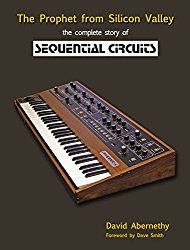
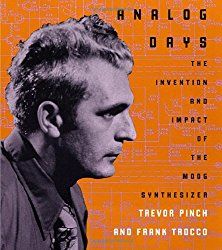
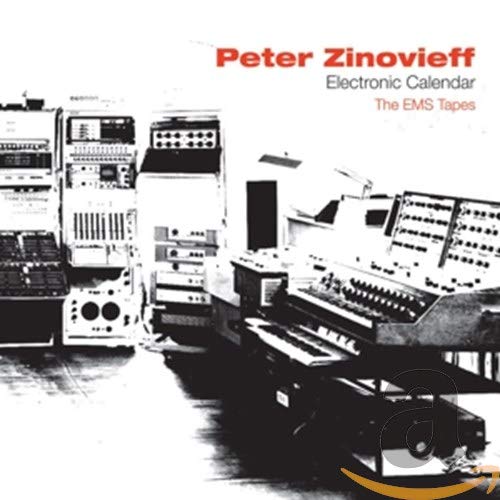
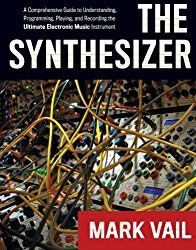

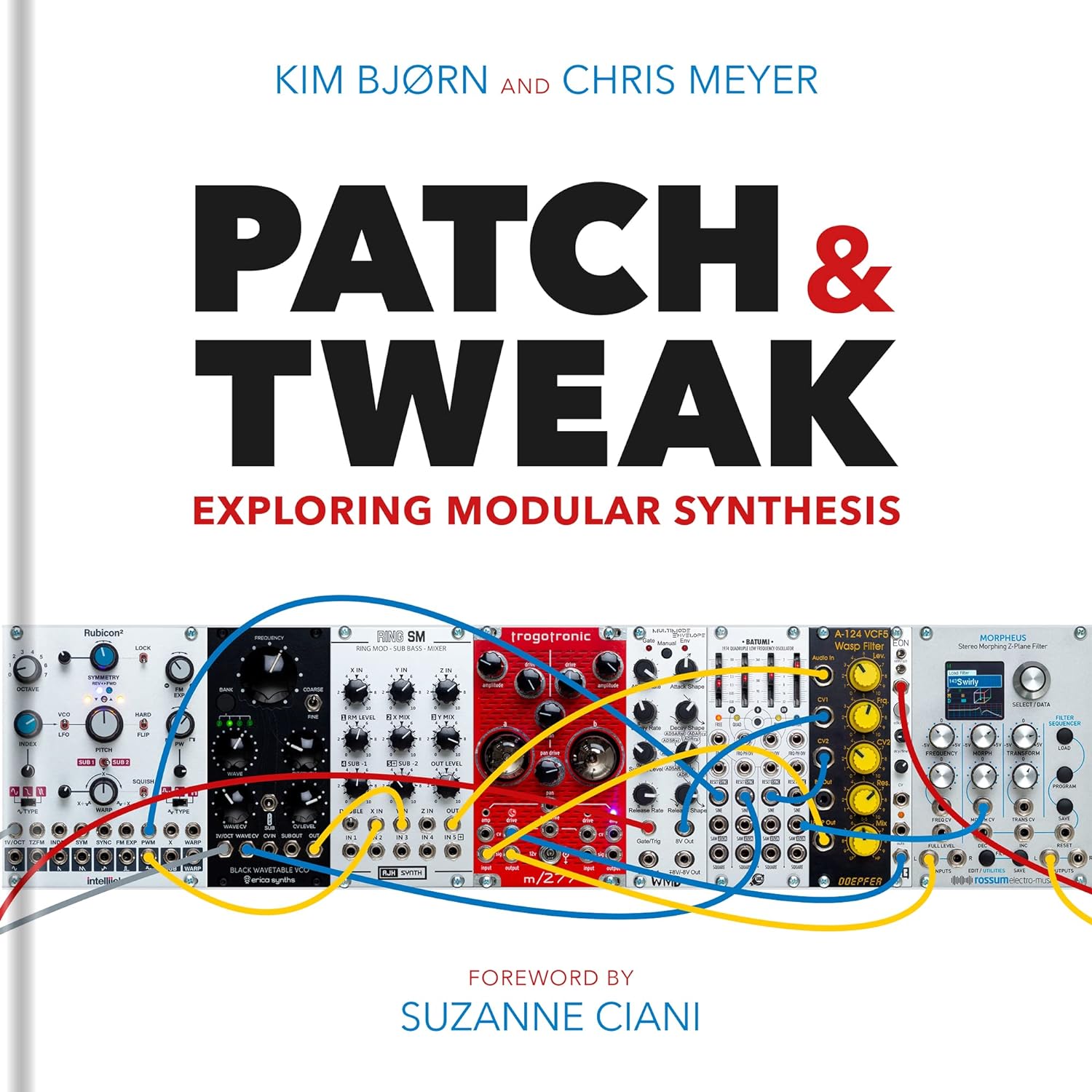
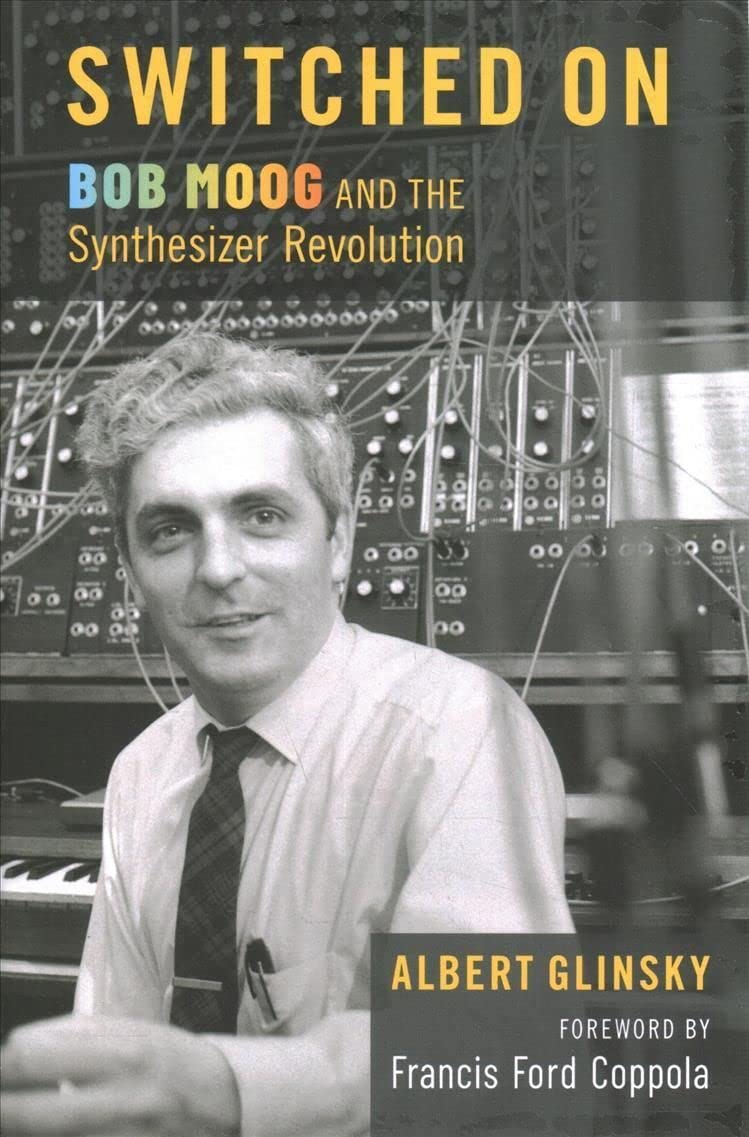
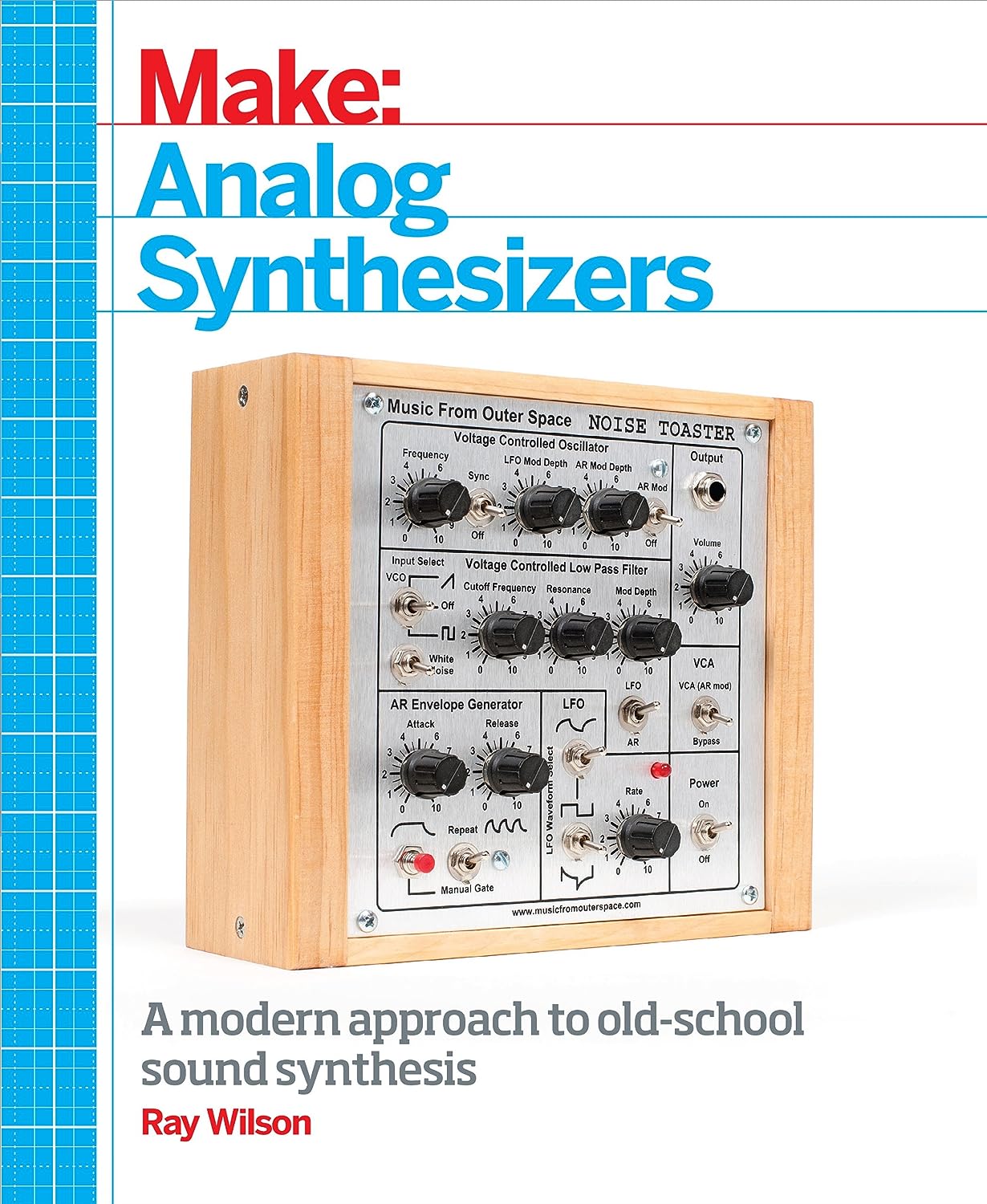
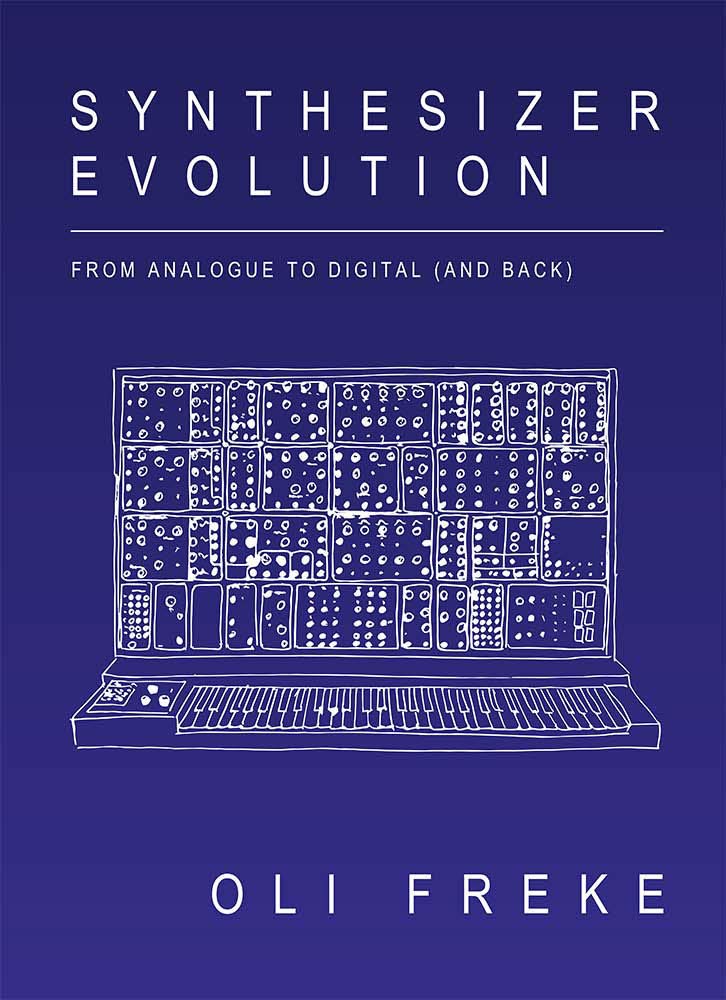

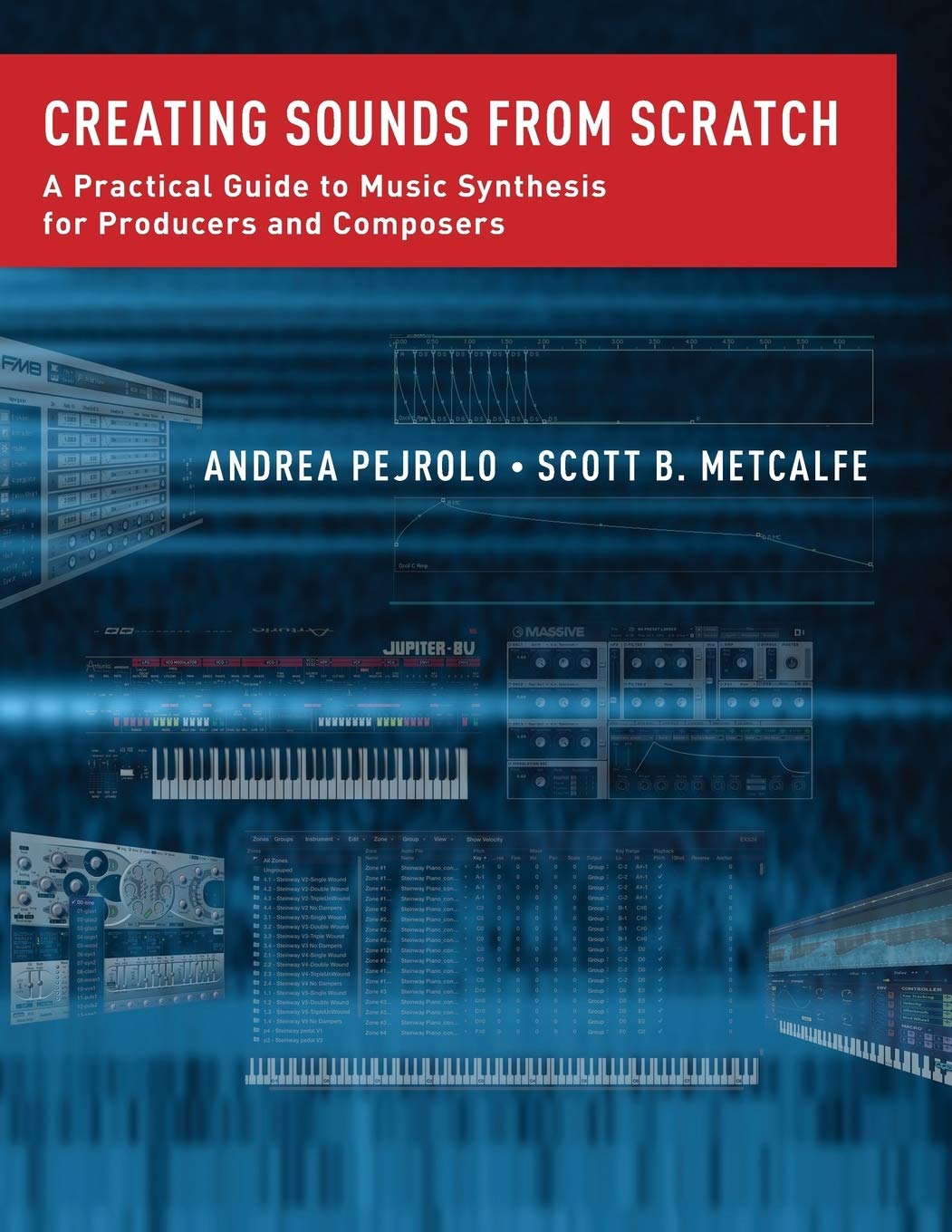


© Matrixsynth - All posts are presented here for informative, historical and educative purposes as applicable within fair use.
MATRIXSYNTH is supported by affiliate links that use cookies to track clickthroughs and sales. See the privacy policy for details.
MATRIXSYNTH - EVERYTHING SYNTH













© Matrixsynth - All posts are presented here for informative, historical and educative purposes as applicable within fair use.
MATRIXSYNTH is supported by affiliate links that use cookies to track clickthroughs and sales. See the privacy policy for details.
MATRIXSYNTH - EVERYTHING SYNTH
















